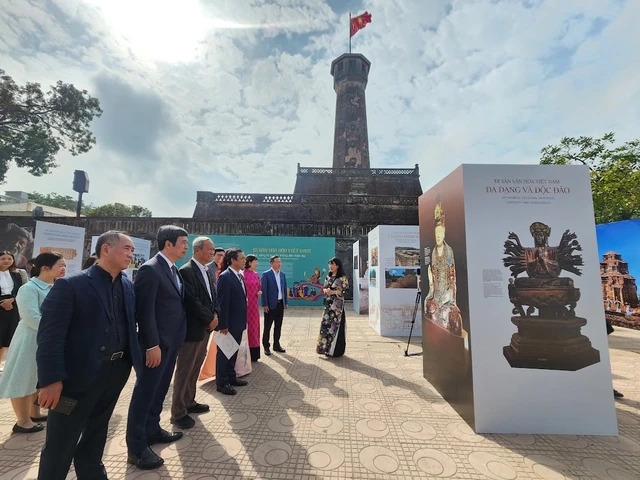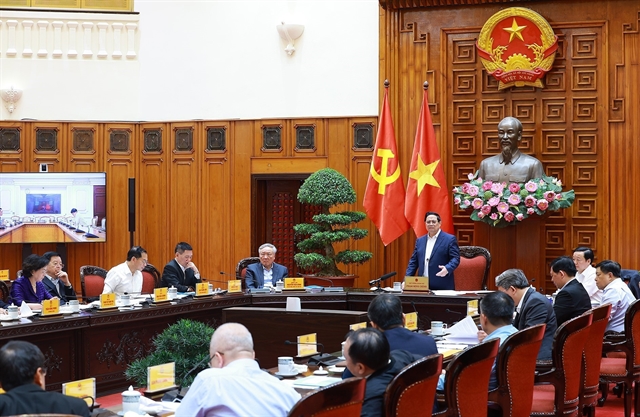 Society
Society

Việt Nam aims to reduce poverty and eradicate hunger for everyone using a multidimensional approach, to ensure no one is left behind, Minister of Labour, Invalids and Social Affairs Đào Ngọc Dung said at the working session of the NA meeting on Tuesday morning.

|
| Minister of Labour, Invalids and Social Affairs Đào Ngọc Dung speaks during a working session of the NA meeting in Hà Nội on Tuesday. —VNA/VNS Photo |
HÀ NỘI — Việt Nam aims to reduce poverty and eradicate hunger for everyone using a multidimensional approach, to ensure no one is left behind, Minister of Labour, Invalids and Social Affairs Đào Ngọc Dung said at the working session of the NA meeting on Tuesday morning.
The working session was held to discuss the national target programme on sustainable poverty reduction during the 2021-2025 period. The program aims to cut the poverty rate by 1-1.5 per cent annually, 4-5 per cent in poor districts, and over 3 per cent in ethnic minority groups in line with the multidimensional poverty approach.
The rate of trained labour in poor and disadvantaged areas is expected to increase to 60 per cent, according to the program.
The program comprises six projects and 11 sub-projects, requiring total funding of VNĐ75 trillion (US$3.2 billion), of which VNĐ48 trillion would be sourced from the national budget, VNĐ12.6 trillion from localities' budgets, and the remaining VNĐ14.3 trillion from other sources.
Direct beneficiaries of the program include poor families and near-poor families, with a focus on children, the handicapped, women, ethnic minority people, and people who live in poor districts and extremely disadvantaged communes in coastal and island areas.
Dung said sustainable poverty reduction is an important policy of the Party and State. In recent years, with the participation of the whole political system and the efforts of the people, the country has made encouraging achievements in poverty reduction.
After the five-year implementation of the national target program on sustainable poverty reduction for the 2016-2020, the country’s average poverty rate dropped from 9 per cent in 2015 to only 2.75 per cent in 2020.
Noticeably, the poverty rate among ethnic minority groups dipped by four per cent and over eight million people escaped from poverty over the past five years.
Việt Nam was one of the first 30 countries in the world to adopt a multidimensional poverty approach and has achieved the UN’s Millennium Development Goal on poverty reduction already.
However, it is estimated that over 4.4 million families or 17.447 million people in Việt Nam will still be living below the multi-dimensional poverty line by January next year.
People experiencing poverty in Việt Nam are defined as those earning less than VNĐ1.5 million ($65) a month in rural areas, and VNĐ2 million in urban areas.
Many NA deputies said the programme had recorded encouraging results but shortcomings remained. The pace of poverty reduction was unstable and the rate of households becoming poor again after escaping poverty was still high, particularly those living in natural disasters-hit areas.
They agreed with the investment policy for the program and suggested specific regulations and principles to support the poor as well as measures to ensure the efficiency of the programme.
Deputy Nguyễn Thị Mai Hoa from Mekong Delta Đồng Tháp Province said poverty reduction policies should be designed to encourage the poor to try to escape poverty themselves.
She also suggested renewing poverty reduction policies toward investing in humans and based on their needs instead of only focusing on investing in infrastructure development. Investment should also be made in people’s health, education, vocational training and creating sustainable livelihoods for people.
New-style rural development
The NA deputies also discussed the National Target Programme on New-Style Rural Development for the 2021-2025 during the morning session.
They said over the past ten years, the implementation of the programme had helped to improve the living conditions of people and created a new face for rural areas across the country.
In order to improve the efficiency of the programme in the future, some deputies proposed solutions such as exploiting advantages of each region and tackling difficulties in agricultural production as well as increasing the application of science and technology in building new-style rural areas.
They also recommended paying more attention to promoting gender equality because women in rural areas faced many challenges getting access to jobs, assets and healthcare services.
In the afternoon, the legislature was due to discuss the national financial plan, public borrowing and debt payment plan, and mid-term public investment plan for the 2021-2025 period.
The lawmakers were to also adopt a Resolution on the 2021-2025 socio-economic development plan, a Resolution on the law and ordinance building programme of 2022, adjustments on the law and ordinance building programme of 2021, and resolutions on the establishment of the legislature’s thematic supervision delegations for 2022. VNS




